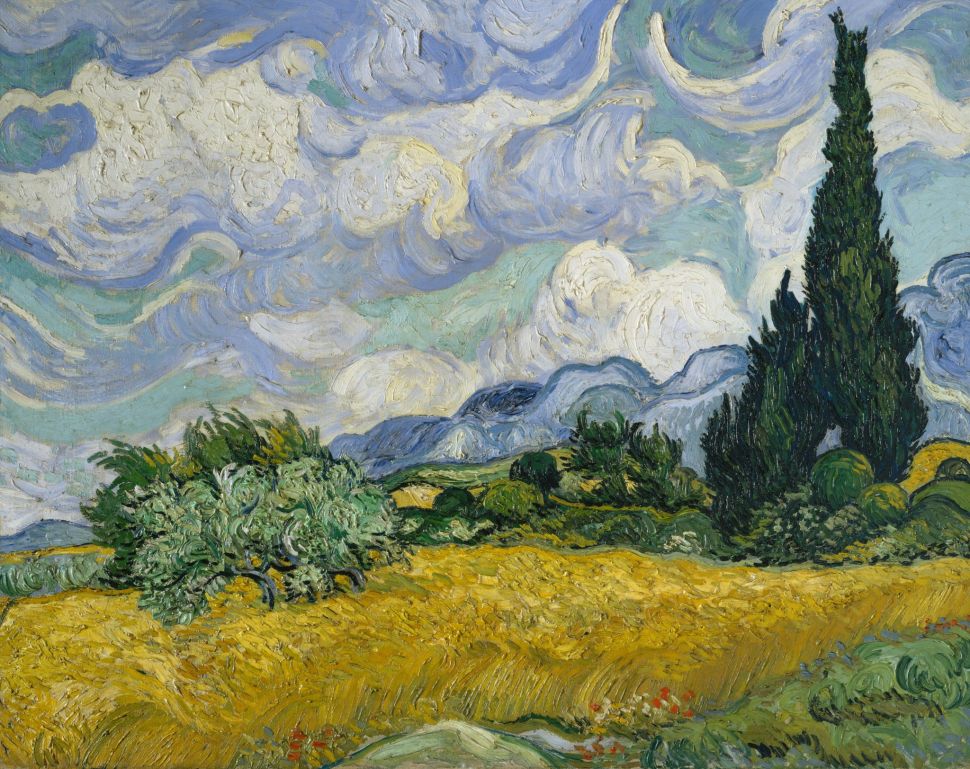“I need a starry night with cypresses,” Vincent van Gogh wrote to his brother Theo, an art dealer, in April of 1888—the same year he painted Orchard (in Blossom) Bordered by Cypresses.

Two years later, just months before his death by suicide, the tormented artist sent a letter to the French art critic Albert Aurier in which he wrote: “In my case the emotions that take hold of me in the face of nature go as far as fainting, and then the result is a fortnight during which I am incapable of working. However, before leaving here, I am planning to return to the fray to attack the cypresses.”
The ‘here’ Van Gogh references is the Saint-Paul-de-Mausole mental asylum at Saint-Rémy-de-Provence, widely believed to be where cypresses first caught his eye. However, cypress trees, which the Dutch artist called “characteristic of Provence,” appear in the background of several pieces he painted while in Arles, where he lived for about fifteen months after leaving Paris.
The Provençal cypresses eventually moved into the foreground of Van Gogh’s works, becoming something of an obsession. In June of 1889, shortly after voluntarily admitting himself into Saint-Paul-de-Mausole, he wrote to his brother Theo that the cypresses still preoccupied him and that he wished to “do something with them like the canvases of the sunflowers.” He called their lines and proportions beautiful and likened them to Egyptian obelisks.

We know for certain that the shape and the color of the trees fascinated the artist—the green being of “such a distinguished quality.” He was so entranced that he wrote to his brother several times about their qualities and the challenges of painting them. What we don’t know is whether cypresses held any meaning for him beyond his “great desire” to capture their aesthetic qualities in his paintings and drawings.

Van Gogh’s Cypresses at The Metropolitan Museum of Art, curated by Engelhard Curator of Nineteenth-Century European PaintingSusan Alyson Stein, both showcases Van Gogh’s exploration of cypress trees as a subject and considers what they might have meant to the artist at different points in his time in Provence. Organized chronologically in three galleries, Van Gogh’s Cypresses showcases The Met’s Wheat Field with Cypresses and Cypresses alongside works on loan from 30 public and private collections, including The Starry Night, A Wheatfield, with Cypresses and Country Road in Provence by Night.
In a statement, Max Hollein, Marina Kellen French Director of The Met, calls the exhibition a “once-in-a-lifetime gathering of works [presenting] both an overview and an intimate glimpse of his creative process, challenging prevailing notions with fresh insights.” In terms of specific insights, the exhibition notes do point out that the Provençal cypresses as symbols of “death, rebirth and immortality” and “a beacon of hope, perseverance and resilience,” but viewers are left to draw their own conclusions as to the meaning of Van Gogh’s two-year-long preoccupation with the trees.

“I’m astonished that no one has yet done them as I see them,” Van Gogh wrote to Theo, and he wasn’t wrong about his singularity of vision. Those of us deeply moved by his work are incredibly lucky to be able to come to The Met to see them as he did, considering his entire career spanned just a decade and was doomed to end far too soon after he penned those words. As he did, Van Gogh likely didn’t consider that no one would see—or paint—the Provençal cypresses with quite the same eye or quite the same passion ever again.
Van Gogh’s Cypresses is on view at The Met through August 27.

